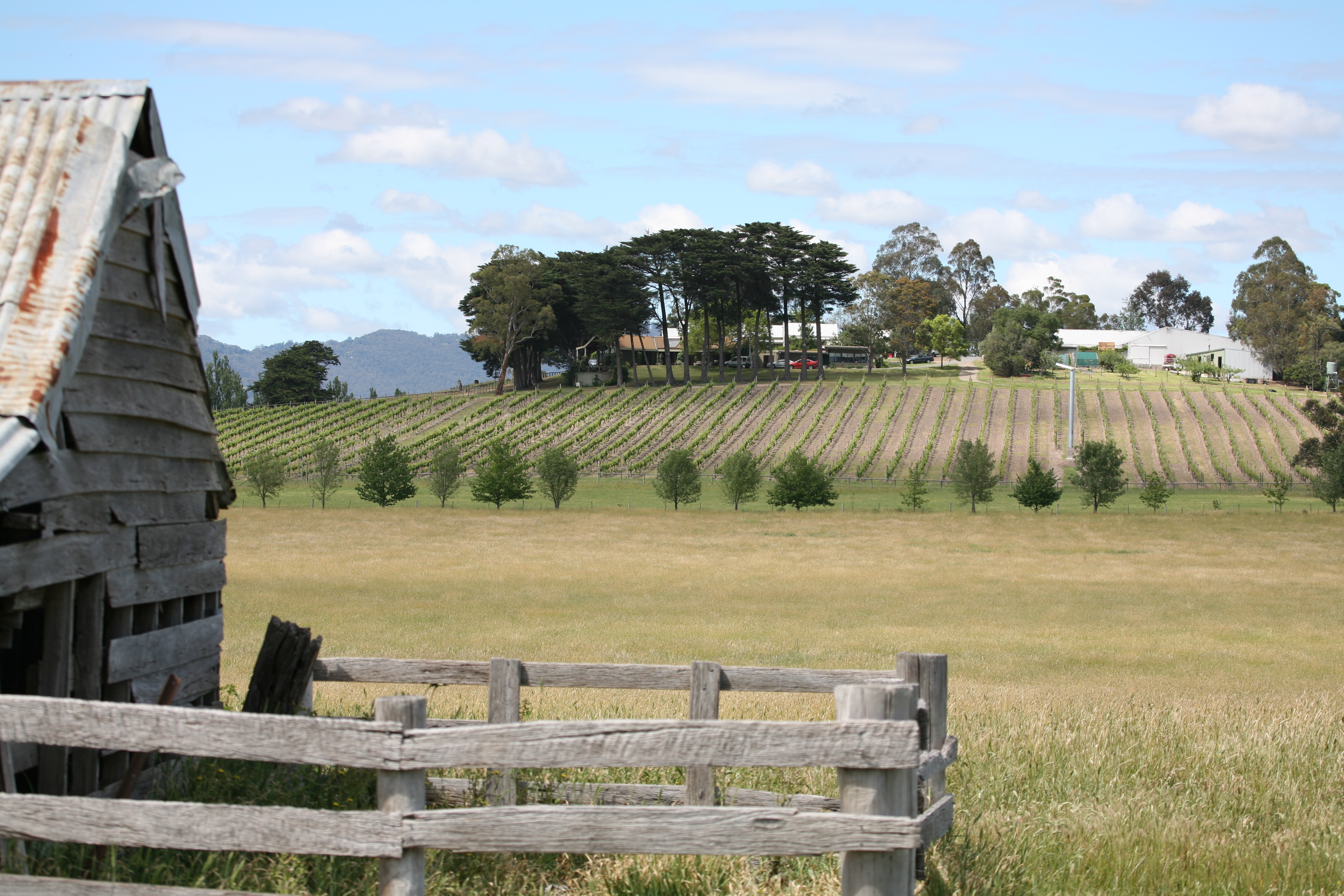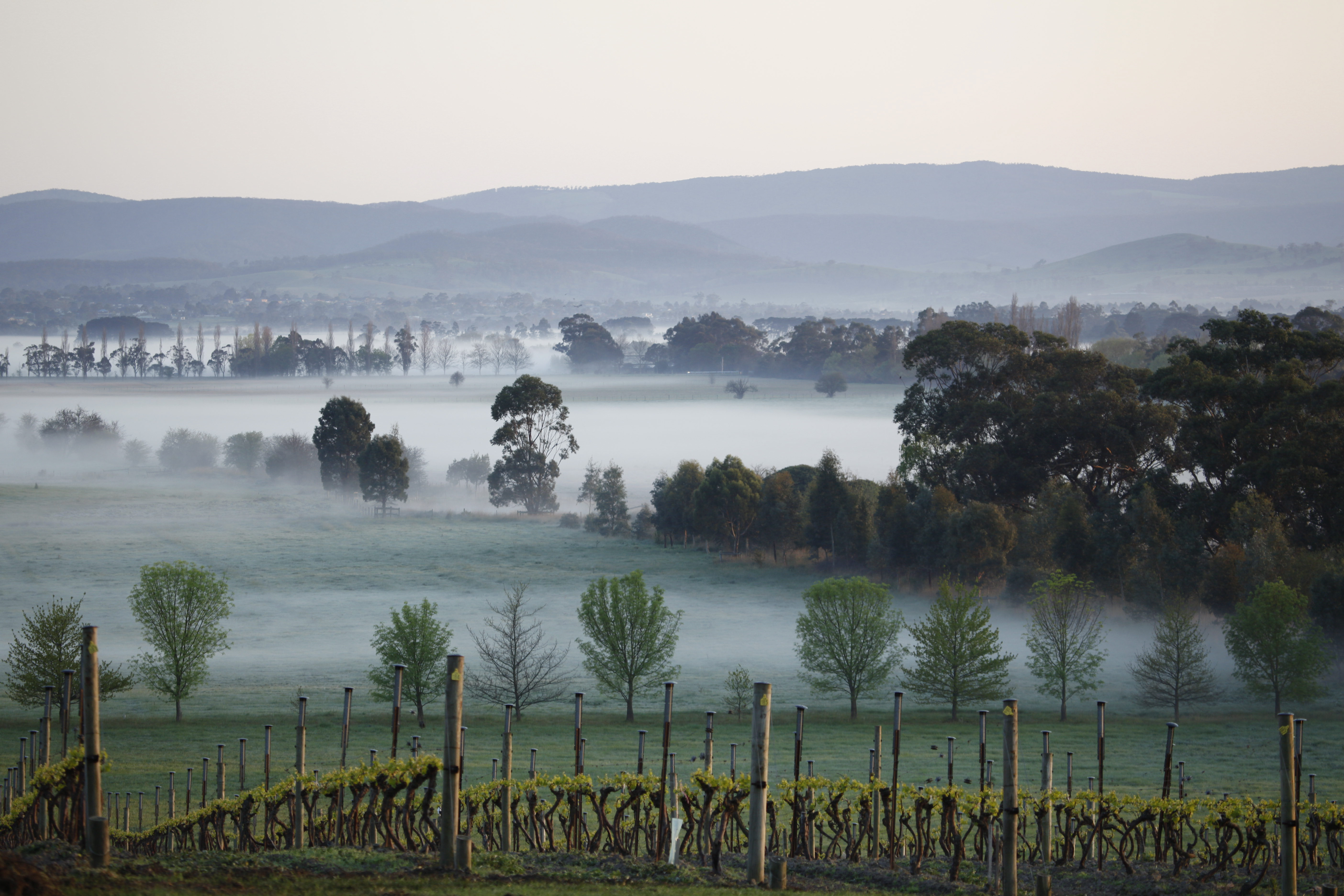By Ed Merrison

The see-saw fortunes of fad chasers can make for entertaining viewing but in an age of flip-flop “leadership” and obsequiousness to “opinion- shapers”, it can be good to remember those who stick to their guns and keep hitting the target.
Few Australian estates match Mount Mary – newly crowned Halliday Wine Companion Winery of the Year – when it comes to showing the courage of their convictions. The tenor was set by Dr John Middleton, and has continued as the reins have passed through the generations to his grandson, current head winemaker Sam. “I think his staunch belief in what he was doing from a winemaking point of view was pretty amazing,” says Sam of the man who planted the vineyard in the early 1970s. “I remember sitting with him by the fire one day, and it was a time when the industry was changing a little bit and fads were coming in and out, and he just looked me in the eye and said: ‘We’re going to keep making the same style that we’ve made for the past 30 years and if palates change, we’ll go out of business’.” It struck a young Sam as extreme but has come to make perfect sense as he’s grown into the role of leader. “It’s a reminder that if you’ve got confidence and real passion in what you’re doing, people are going to follow and are going to like it.”
Fittingly for a Middleton, you sense that Sam did not simply take his grandfather’s word for it; rather, it appears to be the land and its wines that have convinced him that the good doctor was right. “I’ve learned a huge amount about the site from tasting the wines,” he says. “We’re trying to make subtle, restrained, food-friendly styles of wine that age well and show liveliness and vibrancy but still restraint – and I think that’s what our site does really well.” In fact, the site itself has eased the strain of upholding the estate’s legendary reputation since he took the helm in mid-2011. “It’s another reason why I don’t get too stressed with feeling the pressure and expectations,” he says. “I think we all know at Mount Mary how important the vineyard is, and if we get that right, the winemaking’s pretty easy.”

People who drink Mount Mary wines have also given reassurance. The wines don’t come cheap but in some ways the equation is simple. A ruthless insistence on quality has gone hand-in-hand with the Middletons constancy of style, and the range is neatly delineated and firmly established. There are four wines made under the Mount Mary label, two inspired by Burgundy and two by Bordeaux. In the former camp are Chardonnay and Pinot Noir, in the latter the white and red blends Triolet (Sauvignon Blanc, Semillon and Muscadelle) and Quintet (Cabernet Sauvignon, Merlot, Cabernet Franc, Petit Verdot and Malbec). All the fruit comes from the one site in Coldstream, where all the original vines are planted on a north-facing slope on sandy clay loams over Silurian limestone. The wines set out, says Sam, to reflect the site and the season, and Mount Mary’s followers tend to appreciate the vagaries of nature. “They’re not just looking at the quality of the wines from year to year; they’re looking at how the wines have changed from year to year, and how the seasons affected those wines. That’s a big part of allowing us to do what we do, I guess.”
He sees an instructive moral in the story of the Chardonnay, a wine that – like everything at Mount Mary – has held its course and let the waves of fashion wash over it. “It’s funny to talk to people about our Chardonnay now because 20 years ago people thought our Chardonnay was really lean and tight, picked too early and whatever else,” he says. “Now we’re on the opposite end of the scale where we’re probably a bit richer, riper, with more structure to our Chardonnay than a lot of other producers currently. I guess my grandfather was a trailblazer in a lot of ways in terms of that style of Chardonnay, and it’s really en vogue at the moment.”
That’s not to say that Sam’s been resting on his laurels. Quite the contrary. “I’m very conscious of wanting these ‘modern-day’ Mount Mary wines to sell based on the quality that’s in the bottle,” he says. “I don’t want these wines to only sell on past history and reputation. I want these current wines to be the best wines we’ve made. If I was too worried about the past, I wouldn’t be spending enough time and energy thinking about how we’re going to improve things. I’m not interested about trying to keep the reputation where it is, because I want to improve it.”

Improvements have been small but constant, says Sam. He credits his father David and sister Claire with getting the business into good shape and says he learned “huge amounts” during three vintages as assistant to Rob Hall, his predecessor as head winemaker. Since then, Sam’s status as a member of the family has allowed a certain flexibility in questioning practices and implementing tweaks. These have been minor but myriad, in both the field and cellar. All have been made with an emphasis on a healthier vineyard and gentler ways in the winery to coax out its spirit. The team has sown cover crops in every second row to build up organic matter in the soil and attract beneficial insects to help with pest control. Cover crop under the vine row helps with weed control, and straw and compost mulches under vine row conserve soil moisture and improve its structure. In the winery vibrating sorting tables have replaced receival bins with augers, gravity is used a lot more to move wine and peristaltic pumps have replaced harsher mono versions.
The estate, whose Pinot is voraciously lapped up every year, has moved decisively to deal with the threat of climate change to the viability of early-ripening varieties in this, a relatively warm pocket of the valley. Enter Marli Russell, the project named for Dr John’s wife. In 2008 and 2009 David Middleton and Rob Hall added Rhône varieties to complement the Burgundy and Bordeaux contingent. In went Marsanne, Roussanne, Viognier, Grenache, Mourvèdre and Cinsault. The first wines were made in 2014, with a second lot following in 2015, both released earlier this year. “I love it,” says Sam. “It’s thrown up more surprises than I thought it would. With the Grenache in particular we’ve been able to get that riper than I expected, which is good. I think the reds are going to keep improving but I think we’re making some great white Rhône blends from those varieties.”

Thus the estate advances at a measured pace, with pros and cons meticulously weighed. The approach is empirical, as befits an estate founded by a doctor of resolute purpose. Sam’s a chip off the old block in this regard. Where the hares leap from bandwagon to bandwagon, Sam’s happy to be the tortoise, strolling along with a healthy sense of scepticism. “I’m absolutely 100% up for experimentation and doing different things but at the end of the day it has to make a better wine,” he says. “The whole thing’s just lost and gone a bit silly if you’re just doing stuff to say that you’ve done it, rather than doing stuff to make a better drink.”
With some young winemakers you sense the passion bubble over like a shook-up Pét-Nat. That’s not Sam. But this deeply committed character derives serious pleasure from his work. The connection to the family vineyard is key. “That whole notion of being able to make a product from that one site, that reflects a season – it’s a time capsule that we can keep, if we want, for ever and ever – that really excites me, and being able to offer that and give people enjoyment from that product is something that really excites me,” he says.
The success of the estate, both past and present, must be deeply satisfying. But while Mount Mary’s style and values are here to stay, it’s the future that holds the real excitement. “I’m really passionate about it being a family business and playing my part in hopefully continuing the story and improving it where I can,” says Sam. “Having something that I can hand to the next generation hopefully in a better state than I found it is something that really excites me as well.”